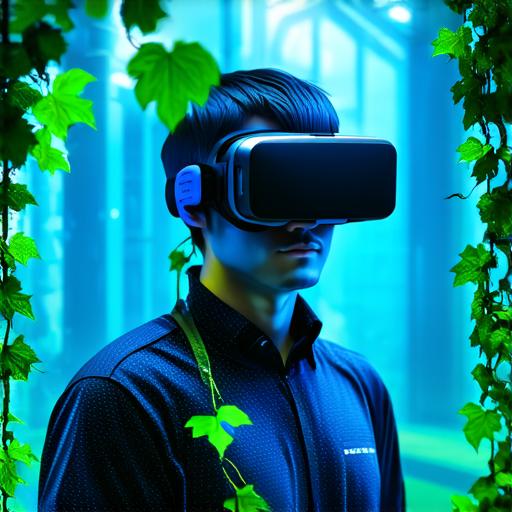
How does virtual reality provide assistance?
Virtual reality (VR) is becoming increasingly popular in various fields such as gaming, education, and healthcare.
It provides an immersive experience that allows users to interact with a digital environment in a way that simulates real life. However, VR also offers assistance in many ways beyond just entertainment.
1. Training and Education
One of the most significant advantages of virtual reality is its ability to provide realistic training scenarios that are safe for learners to practice. For example, medical students can use VR simulations to practice surgeries or emergency procedures without risking harm to real patients.

Similarly, pilots can practice flying in a simulated environment, allowing them to gain valuable experience without the risk of crashing.
VR also offers an immersive learning experience that can help students engage more deeply with the material. This engagement can lead to better retention and understanding of the material.
For example, history students can explore ancient civilizations in a virtual world, allowing them to gain a deeper appreciation for the culture and way of life.
2. Therapy and Rehabilitation
Virtual reality has also been used as a tool for therapy and rehabilitation. It provides an immersive experience that can help individuals overcome phobias or anxieties in a controlled environment.
For example, someone with a fear of heights can use VR to simulate being on a tall building, allowing them to gradually confront their fear in a safe and controlled environment.
Similarly, VR can be used for physical rehabilitation. For example, individuals recovering from injuries or surgeries can use VR to practice walking or other movements, providing an engaging and motivating way to regain mobility.
3. Design and Engineering
Virtual reality has also become an essential tool in design and engineering fields. It allows designers and engineers to test and refine their designs before they are built, saving time and resources.
For example, architects can use VR to simulate how a building will look and function in its intended environment, allowing them to make necessary adjustments before construction begins.
Similarly, engineers can use VR simulations to test the design of products or machinery, allowing them to identify potential issues before they are built. This process saves time and resources by reducing the need for physical prototypes.
4. Tourism and Hospitality
Virtual reality has also revolutionized the way individuals experience travel and hospitality. It allows people to explore destinations in a virtual world, providing an immersive experience that can help them make informed decisions about their travel plans.
For example, someone planning a trip to Paris can use VR to explore the city, visit iconic landmarks such as the Eiffel Tower, and get a sense of what it would be like to be there in person.
Similarly, hotels and other hospitality providers can use VR to provide guests with an immersive experience that allows them to preview their stay before they arrive. This can help guests feel more comfortable and confident in their decision to stay at the hotel, leading to increased bookings and repeat business.
Conclusion
In conclusion, virtual reality provides assistance in many ways beyond just entertainment. It offers a safe and controlled environment for training and education, therapy and rehabilitation, design and engineering, and tourism and hospitality. With its immersive experience, VR has the potential to revolutionize the way we work, learn, and explore. As virtual reality technology continues to evolve, we can expect even more innovative ways for VR to provide assistance in our daily lives.


